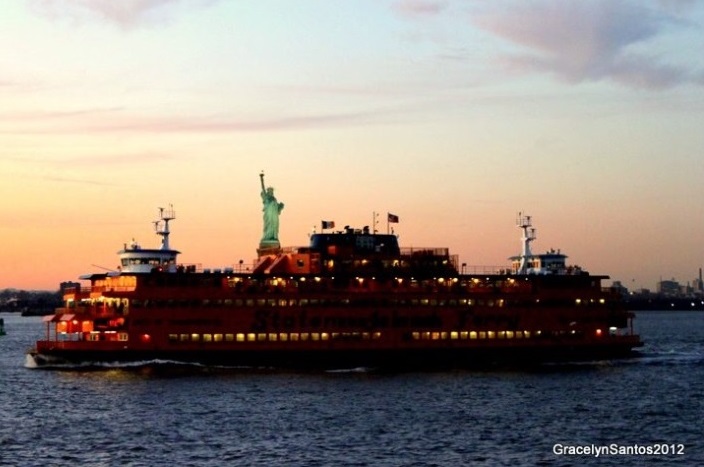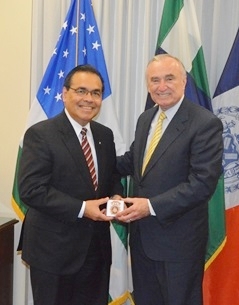NYC ethnic media challenged by technology, rethink roles, seek opportunities for growth: study
This is the Executive Summary of a new study, “New York City’s Ethnic Media in the Digital Age,” conducted by Matthew Matsaganis, associate professor in the Communication Department of the University at Albany, State University of New York. The study was done in collaboration with the Center for Community and Ethnic Media of the CUNY Graduate School of Journalism. ‘The FilAm’ was among the 103 ethnic media producers interviewed.
Despite limited financial and human resources, the overwhelming majority of New York City’s ethnic media that participated in the study (and that serve over 30 different immigrant and ethnic communities) detailed a variety of ways in which they are adapting to a rapidly changing media landscape.
Producers interviewed described clearly some important challenges they face because of the Internet. They spoke, for example, about competition from mainstream media based in what many among their audience would identify as their country of origin, which undermined the importance of their role as exclusive sources of information about current affairs in that country. However, they also identified opportunities for growth that the Internet affords them (e.g., expanding their audience base and taking advantage of media production expertise outside of the U.S., which translates to quality, culturally desirable content, but also to cost savings).
Many ethnic media producers indicated frustration with what they saw as the absence of a business model that they could implement to strategically invest in online ventures and grow as enterprises. Additionally, in interviews, some producers indicated trepidation in further developing their online presence because they feared their online expansion would cannibalize their offline products. This was true particularly in cases like that of an ethnic newspaper serving a large and growing audience of Chinese-origin where the offline offering continued to produce significant revenue.
The research team would like to offer several recommendations that we hope will facilitate ethnic media organizations’ efforts to innovate and successfully adapt to the new media landscape.
Invest resources to develop digital platforms. A recent study by the Pew Research Center indicates that audiences across the U.S. are increasingly relying on digital sources for news. Specifically, 28% of adults in the U.S. said that they sought news on news websites and apps, and another 18% said they did so via social media (the related figures for television, radio, and print newspapers were, respectively, 57%, 25%, and 20%). The same study also indicates that the growing dependency on digital news sources is driven by individuals who are seeking news using their mobile devices (and not their desktop computers).
Focus on developing locally relevant content: The Internet does challenge ethnic media to rethink their roles in the communities they serve. Focusing on the development of content that is about the local community (as opposed to the “home country”) used to be recommended to ethnic media producers serving ethnic communities, which, over time, comprised of an increasing number of second- and third- (or later-) generation immigrants. That was because staying on top of current affairs in a distant country of origin grew less important for these individuals.
Identify new audiences: Ethnic media producers should carefully assess whether their content might also appeal to new audiences they had not targeted ever before. In our study, a Japanese ethnic newspaper in New York, for example, found that news about New York City and the local Japanese-origin community was of interest to individuals living in Japan who were interested in doing business in, moving to, or traveling to New York.
Make technology a topic of ongoing conversation in the organization: Given our findings regarding the significance of communication around technology within the media organization in developing producers’ sense of how helpful it is to use social media for work-related tasks, which in turn promotes social media adoption, we would encourage ethnic media organizations’ leadership to inspire and sustain conversations among staff members about how to leverage the affordances of the Internet and social media, more specifically. Innovation is unlikely to occur unless it is marked in organizational communication as a priority.
Collaborate to learn: Survey and interview findings suggest that the level of competition across ethnic media is relatively low in New York City, largely because they serve such diverse populations. Therefore, time and financial constraints aside, we expect producers to be more open to collaboration and we would encourage the exchange of information among them regarding their efforts to leverage the power of the Internet (both their successes and failures) and their concerns and ideas about how to proceed in the future.
Pool resources: In the context of the abovementioned series of roundtable events, New York City ethnic media producers (possibly with the support of the CCEM) can explore models of collaboration that would also allow them to pool resources to develop online content production and distribution platforms, from which more than one organization could benefit. The end product need not be a single platform serving all ethnic media in New York City and it need not take the form of a website. An innovative new platform might be able to attract venture capital.
Support (and even conduct) audience research: More research, specifically, on ethnic media audiences’ news-seeking behaviors would help guide producers who are considering if and how to strengthen their presence online, but who are struggling with how to allocate scarce resources (human and financial).
















